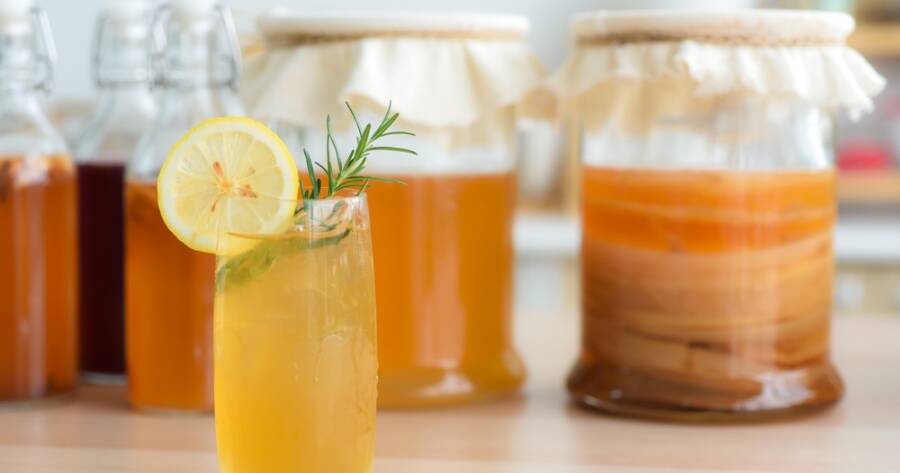Fermentation might sound complicated, but it’s actually one of the oldest and easiest ways to preserve food — and it’s making a big comeback in home kitchens. From crunchy pickles to tangy kimchi and fizzy kombucha, fermenting at home adds flavor and gut-friendly benefits to your diet. With just a few simple tools and the right starter kit, anyone can create delicious fermented foods right on their countertop. Here’s how to get started — no experience required.
Why Fermentation Matters in the Modern Kitchen
Fermentation is a natural process where microorganisms like bacteria and yeast break down sugars and starches. This process not only preserves food but also adds depth to its flavor and boosts its nutritional value. Many fermented foods are rich in probiotics, which can support digestion and gut health.
Beyond health, fermentation is a sustainable, low-waste way to make the most of fresh produce. It’s also incredibly satisfying. Watching cabbage turn into sauerkraut or tea transform into kombucha gives you a deeper connection to your food and how it’s made.
In today’s busy world, fermentation invites us to slow down — but not too much. Most ferments require just a few minutes of hands-on work each day.
Starter Kits That Make It Easy
For beginners, starter kits are a great way to jump into fermentation without having to figure everything out from scratch. These kits typically include fermentation weights, airlock lids, glass jars, and sometimes a packet of starter culture, depending on the type of food you’re fermenting.
Popular fermentation kits come from brands like Mason Tops, Cultures for Health, and Fermentaholics. These companies design their products for home use and often include instruction booklets or access to video guides, which makes learning easier.
Look for kits tailored to the type of fermentation you want to try. For example, a sauerkraut kit will focus on solid vegetables and use simple salt brining, while a kombucha kit will include a SCOBY (a living culture used to ferment sweet tea) and instructions for brewing.
These kits are widely available online and at kitchen specialty stores. They remove the guesswork, especially around safety and proportions, helping you get a good result from your very first batch.
Step-by-Step: Making Your First Vegetable Ferment
You don’t need to master every ferment at once. Start with something simple like lacto-fermented carrots, cabbage, or cucumbers. These vegetables require no special starter beyond salt, and they’re ready to eat within a week or two.
Here’s a simple outline for getting started:
- Choose your vegetable: Cabbage is great for beginners because it creates its own brine when massaged with salt. Other good options are radishes, carrots, or green beans.
- Prepare the jar: Clean it well with soap and hot water. There’s no need to sterilize it if it’s freshly washed.
- Make the brine: For most vegetables, a 2% salt solution is ideal. This means about 1 tablespoon of salt per 2 cups of water.
- Pack the vegetables: Place your chopped or sliced vegetables tightly in the jar and cover them fully with brine.
- Add your fermentation lid or weight: This keeps everything submerged and prevents mold from forming.
- Let it sit: Keep the jar in a cool, dark spot. Check it daily to release any built-up gas and ensure the veggies stay under the brine.
Taste your ferment after 5–7 days. Once it’s tangy enough for your liking, move it to the fridge to slow down the process and extend its shelf life.
Other Easy Ferments to Try
Once you’re confident with veggies, you can explore more complex ferments. Kombucha, yogurt, and sourdough each use different starter cultures and timing, but starter kits can guide you through.
Kombucha kits include a SCOBY and tea instructions. Yogurt kits offer thermometers and culture packets. Sourdough kits often come with proofing baskets, jars, and instructions on feeding your starter.
Here are three fun options for your next step:
- Kombucha: Refreshing and slightly fizzy, it’s made from tea and sugar and ferments over 7–12 days.
- Yogurt: With a heating element or warm environment, milk turns into creamy, tangy yogurt in under 12 hours.
- Sourdough: The starter lives in your fridge and can last for years, giving rise to everything from crusty loaves to pancakes.
Each type of ferment offers different textures, flavors, and techniques — and they all encourage exploration and creativity in the kitchen.
Bring Fermentation Into Your Routine
Fermenting at home isn’t just a trend — it’s a return to one of the most rewarding kitchen skills around. With the help of modern starter kits and simple step-by-step methods, anyone can add probiotic-rich, flavor-packed foods to their daily meals.
Whether you start with sauerkraut, try your hand at kombucha, or experiment with yogurt, fermentation teaches patience, attention, and joy. Plus, it’s fun. Once you begin, you’ll likely find yourself planning your next batch before the first one’s even finished.

